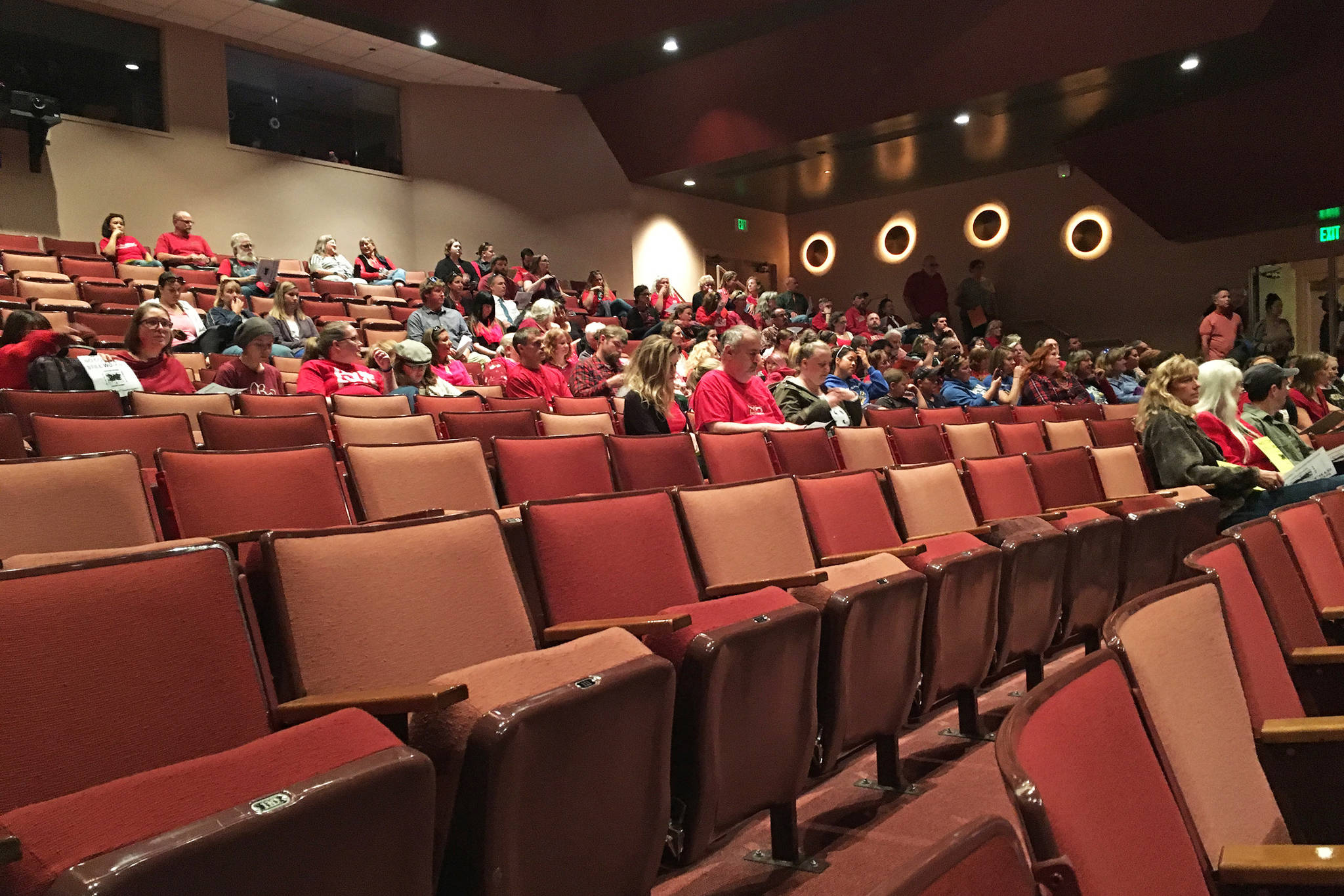Arin Bowen starts her morning at Soldotna Montessori where she works as an interventionist. In the afternoon, she works as the Quest teacher at Redoubt Elementary. Her workday doesn’t end there though. She works as a referee for high school volleyball and works at Challenger Learning Center running missions and educational programs.
“I have had my other jobs for several years and I just kept them to help pay for daycare and other fun bills adults get to pay,” Bowen said.
While Bowen said she enjoys her side gigs, she also said she’s expecting her third child this spring, and that working long nights and on the weekends might be hard on her family.
“(The extra jobs) might make it harder to be gone for during those long nights and weekend days with two young ones and a fifth-grader at home,” Bowen said.
She said her husband and parents are teachers too.
“We do what we need to do,” Bowen said.
Bowen isn’t the only educator who has taken up a second job. In fact, Bowen said she remembers her parents always having summer and weekend jobs, as well.
“It’s nothing new for me,” Bowen said. “It’s kind of what I have always known.”
Roughly 1 in 5 teachers in the U.S. have a second job, according to the Federal Bureau of Labor Statistics. The most recent National Teacher and Principal survey from the U.S. Dept. of Education shows that 18 percent of teachers have a job outside of their school system.
According to the National Education Association, average starting salaries for educators in 2016-17 was $38,617.
Salaries for teachers in the Kenai Peninsula Borough School District start at around $48,000 a year and can grow to near $100,000 a year, Pegge Erkeneff, communications liaison for the district said. Salaries can grow depending on education and number of years with the district.
Winter Marshall-Allen, who works as a special education teacher at Homer High School, said she took up a second job to balance her high cost of living.
“I have two degrees and I live to teach, but the cost of living is expensive,” she said.
Alaska has the 10th highest housing wage in the nation, according to 2018 Out of Reach study conducted by the National Low Income Housing Coalition. A housing wage is an hourly wage a full-time worker must earn to afford a modest rental home while spending no more than 30 percent of their income on rent and utilities. In 2018, the national housing wage is $22.10 an hour, according to the Out of Reach study. In Alaska, one needs to make $24.80 an hour to afford a two-bedroom rental home. In Hawaii, the highest housing wage in the nation, renters need to make $36.13 an hour to afford a similar two-bedroom home.
Marshall-Allen said she’s had more than one job for six out of the 10 years she’s been teaching.
“I have also tutored, been a personal trainer and provided life coach support for individuals with developmental disabilities,” Marshall-Allen said.
David Brighton, president of the Kenai Peninsula Education Association, said he believes the percentage of teachers on the Kenai Peninsula who work second jobs may be higher than the national average because of employment opportunities Alaska has in the summer.
“I know a number of teachers who work in fishing or in tourism during the summer,” Brighton said.
Brighton said his biggest concern for teachers lies in the rising cost of health care.
“Health care is our major concern and we are trying to find a way forward with that,” Brighton said.
Many teachers also use their own money to supplement their classroom. Nationwide, teachers spend $480 a year, of which $250 is tax deductible, on school supplies for their students, according to a study released this year by the National Center on Education Statistics.
Teacher and support staff unions are still waiting to come to an agreement with employee contracts with the school district.

